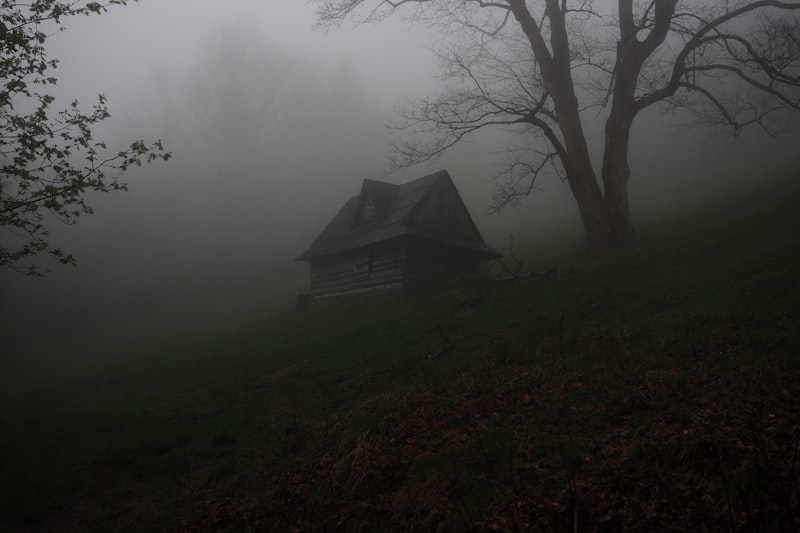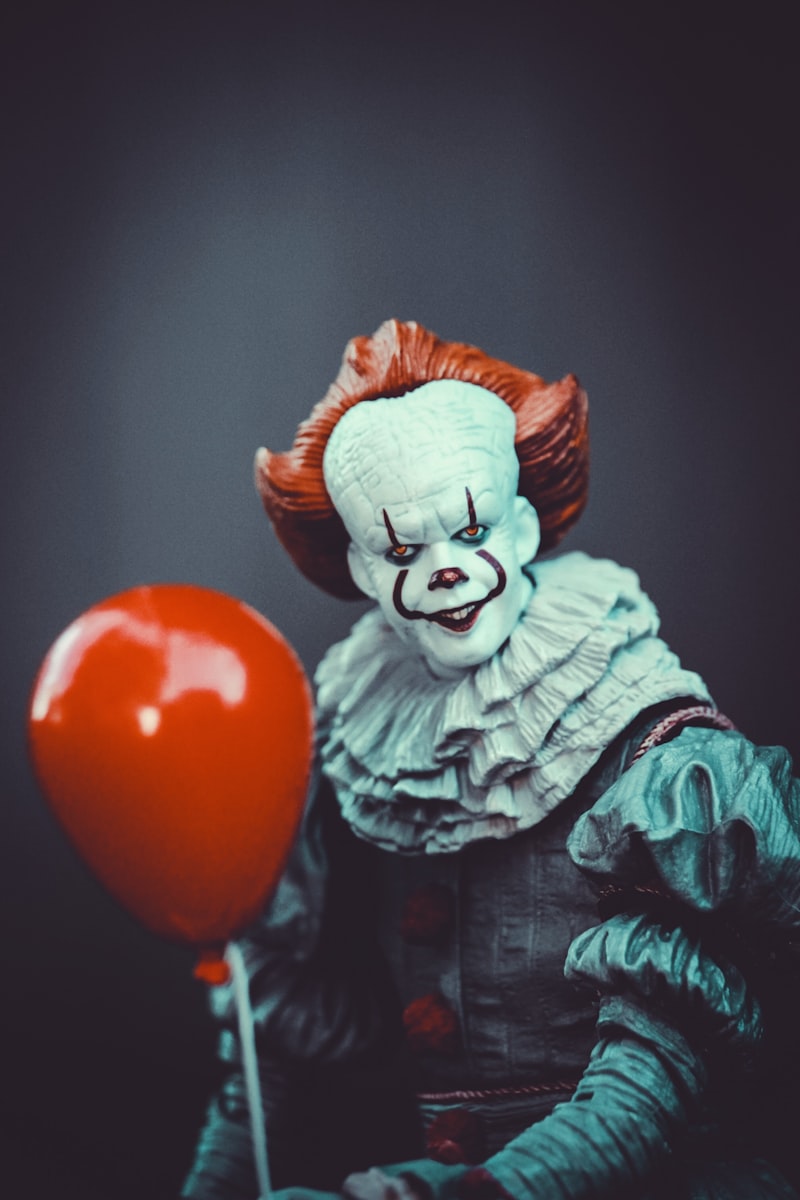Darkness serves as more than a backdrop; it’s a character in its own right, shaping the mood and atmosphere of a story. It cloaks malevolent entities and hides dreadful secrets, heightening the sense of anticipation and dread. When a character ventures into the unknown, the encroaching darkness becomes a tangible force, thick with unseen threats.
In horror storytelling, darkness creates a canvas where fear can manifest. It plays with our primal fears of the unknown and the unseen. What lurks in the shadows? Is it a lurking monster or a malevolent spirit? The mind races to fill in the blanks, conjuring images far more terrifying than anything explicitly described.
Moreover, darkness acts as a metaphor, symbolizing the abyss of the human psyche or the moral decay within society. It reflects the protagonist’s internal struggle, mirroring their descent into madness or moral ambiguity. Just as literal darkness obscures physical vision, metaphorical darkness clouds judgment and tests the characters’ resolve.
Consider horror classics where darkness is integral—the creaking of floorboards in an empty house, the flickering of a dying flashlight in a desolate forest. These scenes leverage darkness to intensify suspense, leading to heart-pounding moments of revelation or terror. It’s the anticipation of what lies beyond the beam of light that keeps readers or viewers on edge, their imaginations running wild.
Darkness in horror storytelling isn’t merely a setting or a backdrop. It’s a narrative tool that shapes emotions, builds tension, and taps into primal fears. By manipulating darkness, storytellers create a visceral experience that lingers long after the final page is turned or the credits roll. It invites audiences to confront their deepest fears, exploring the boundaries of what terrifies us and why we’re drawn to the thrill of the unknown.
Unveiling the Shadows: How Darkness Amplifies Fear in Horror Narratives

Horror narratives masterfully utilize darkness to play on our deepest fears. It becomes a character in itself, shrouding malevolent entities and unseen threats, making the ordinary seem eerie and the familiar feel unsettling. Consider how a flickering candle casts long, twisting shadows that seem to move with a mind of their own, or how the silence of a moonlit forest amplifies the rustling of leaves into something sinister.
Moreover, darkness acts as a metaphorical canvas upon which the imagination paints its most terrifying creations. It invites us to confront our fears head-on, exploring themes of mortality, the supernatural, and the unknown. It’s in these moments of heightened tension that horror narratives thrive, pulling us deeper into the narrative with each turn of the page or frame of the screen.
What makes darkness such a potent element in horror storytelling is its ability to tap into our primal instincts. It triggers the fight-or-flight response, making us acutely aware of our surroundings and susceptible to even the slightest movement or sound. This heightened awareness keeps us on edge, our senses sharp and our adrenaline pumping as we brace for the next scare.
Darkness in horror narratives isn’t just a backdrop; it’s a dynamic force that intensifies fear and suspense. By manipulating shadows and obscurity, storytellers create an atmosphere where every shadow hides a potential threat, and every moment holds the promise of terror. It’s through this manipulation that horror narratives captivate and thrill, leaving an indelible mark on our psyche long after the story has ended.
Beyond the Veil: Exploring Darkness as the Ultimate Tool of Dread in Horror
Darkness plays a pivotal role in evoking primal fears deeply rooted in human psychology. It taps into our fear of the unknown, where every creak and whisper becomes magnified in our minds. As the protagonist ventures deeper into the eerie silence, each step amplifies the tension, building anticipation for the chilling revelation that awaits.
Moreover, darkness is the canvas upon which the imagination paints its most terrifying creations. It shrouds entities in mystery, allowing sinister figures to materialize from the shadows, their intentions obscured until the pivotal moment of reveal. This suspenseful dance between visibility and obscurity keeps the audience riveted, their senses heightened in anticipation of the next heart-pounding moment.
In the hands of skilled storytellers, darkness becomes a character in its own right—a force that manipulates emotions and shapes the narrative arc. It serves as a metaphorical veil, concealing truths and inviting audiences to confront their deepest fears. The interplay of light and dark becomes a visual metaphor, symbolizing the struggle between good and evil, the known and the unknown.
Ultimately, exploring darkness as the ultimate tool of dread in horror transcends mere visual aesthetics. It embodies the essence of fear itself, invoking a visceral response that lingers long after the story concludes. By mastering the art of utilizing darkness, storytellers harness its emotive power to craft unforgettable tales that resonate with audiences on a primal level.
The Art of Obscurity: Why Darkness is the Heartbeat of Horror Stories
Imagine a moonless night where shadows loom ominously, where every creak and rustle becomes a harbinger of unseen terrors. This is where the art of obscurity thrives. It’s the subtle interplay between what is revealed and what remains hidden that keeps us on the edge of our seats, hearts pounding with anticipation.
Darkness in horror stories serves as more than just a backdrop; it’s the heartbeat of the narrative. It shrouds secrets and creates suspense, allowing fear to incubate in the minds of both characters and readers alike. Think of it as the canvas upon which fear paints its most vivid nightmares.

What makes darkness so compelling in horror? It’s the unknown that lurks within it. Our minds fill the void with all manner of horrors, from lurking creatures to malevolent spirits. The fear of the unseen taps into our primal instincts of survival, reminding us of our vulnerability in a world where not everything can be explained.
In literature and film, skilled storytellers use darkness as a tool to manipulate emotions and intensify the atmosphere. It’s the whispered suggestion of something sinister just out of sight that sends shivers down our spines. The anticipation of what might emerge from the shadows keeps us gripped with fear and fascination.
Moreover, darkness plays on our senses, heightening our awareness and sensitivity to every sound and movement. It’s in the darkness that every small detail becomes magnified, each flicker of movement becoming a potential threat. Our imagination runs wild, conjuring horrors that are often far worse than what could be shown in the light.
Shadows and Suspense: Harnessing Darkness to Craft Haunting Narratives
Imagine a moonlit forest, where shadows dance between trees like ghosts whispering secrets. This imagery isn’t just about what you see; it’s about what you feel. Darkness in narratives isn’t merely a backdrop but a character in itself, shaping the mood and heightening emotions. It’s the cloak under which mysteries lurk and suspense thrives.

In crafting haunting narratives, shadows play a crucial role. They obscure truths, hint at dangers, and leave readers guessing. Just as in life, where shadows distort and deceive, in stories, they create an atmosphere where anything can happen. Think of a lone figure on a dimly lit street—what hides within the shadows? The unknown beckons, teasing our curiosity and evoking a primal fear of what lies beyond our sight.
Authors masterfully use shadows to build tension. They drape scenes in twilight, where every creak and rustle becomes ominous. Like a painter using chiaroscuro to contrast light and dark, writers manipulate shadows to emphasize contrasts—between good and evil, hope and despair. The interplay of light and shadow isn’t just visual; it’s psychological, tapping into our deepest fears and desires.
Suspense thrives in the absence of certainty, and shadows provide the perfect canvas for uncertainty to flourish. They cloak intentions, create doubt, and intensify climactic moments. When a character steps into darkness, we hold our breath, wondering what unseen peril awaits. It’s this anticipation, this dance between revelation and concealment, that keeps us turning pages late into the night.
So next time you read a chilling tale or craft your own story, remember the power of shadows. They aren’t just absence of light; they are storytellers in their own right, shaping narratives that haunt our dreams and linger long after the final page.
The Power of Shadows: Evoking Terror Through Darkness in Horror Literature
Authors adept in the craft of horror understand the significance of shadows in shaping narrative tension. Shadows are not merely absence of light; they are entities that conceal and reveal, casting doubt and uncertainty. They stretch and distort, hinting at sinister presences lurking just out of sight. Like a puppeteer pulling strings, shadows manipulate the reader’s emotions, heightening suspense to a fever pitch.
In stories where fear is the protagonist, shadows become characters in their own right, dancing across the pages with eerie grace. They cloak monsters and phantoms, transforming ordinary settings into haunting landscapes where the unknown reigns supreme. What lies within the shadows? This question drives the heart of horror literature, compelling readers to peer into the darkness, even as they fear what might stare back.
Metaphorically, shadows represent the obscured corners of the human psyche, where fears and anxieties reside. They mirror our primal instincts, reminding us of our vulnerability in a world where light does not always penetrate. The interplay between light and shadow becomes a narrative dance, where every flicker of candlelight casts a new revelation or deeper mystery.
The power of shadows in horror literature transcends their mere physical presence. They are conduits for fear, suspense, and the unknown, weaving tales that linger long after the final page is turned. Embrace the darkness, for within its depths lies the essence of terror itself.
Into the Abyss: Understanding Darkness’s Psychological Impact in Horror
Imagine a scene cloaked in darkness, where shadows play tricks on your mind, heightening your senses. The absence of light creates an unsettling atmosphere, amplifying the unknown and triggering a sense of vulnerability. In horror, darkness becomes a character itself, concealing threats and building suspense with each passing moment.
Psychologically, darkness taps into our fear of the unknown. It represents a void where anything can hide—a primal fear deeply rooted in our survival instincts. When protagonists navigate through dark spaces, their heightened anxiety mirrors our own, drawing us into their plight and intensifying the narrative tension.

Furthermore, darkness acts as a metaphor for the unseen aspects of our psyche. It symbolizes repressed fears and unresolved traumas lurking beneath the surface. In horror storytelling, the exploration of darkness parallels the exploration of our inner demons, confronting what we fear most within ourselves.
The impact of darkness is also amplified by its contrast with light. Just as light symbolizes safety and clarity, darkness represents danger and obscurity. This interplay creates a dynamic emotional landscape, where shifts between light and dark evoke visceral reactions and deepen the storytelling experience.
Frequently Asked Questions
Why do horror writers often use darkness as a central element in storytelling?
Explore why horror writers frequently employ darkness as a pivotal narrative tool. Discover how darkness intensifies suspense, evokes primal fears, and enhances atmospheric tension, immersing readers in an eerie and unsettling ambiance.
How does darkness contribute to the atmosphere and mood of a horror narrative?
Darkness in horror narratives intensifies suspense by obscuring threats, heightening fear of the unknown, and creating a chilling ambiance that amplifies psychological tension.
What is the significance of darkness in creating suspense and fear in horror stories?
Explore how darkness serves as a powerful tool in horror storytelling by heightening suspense and evoking fear through the unknown and the unseen.
What are some techniques for using darkness to enhance the psychological impact of horror tales?
Discover effective techniques for leveraging darkness to intensify the psychological impact of horror stories. Learn how strategic use of shadows and absence of light can heighten suspense, evoke primal fears, and immerse readers in an atmosphere of dread. Explore methods like contrast, symbolism, and sensory deprivation to create chilling narratives that linger in the imagination.
How can darkness be used effectively to build tension and anticipation in horror fiction?
Learn how darkness can be strategically employed in horror fiction to heighten suspense and anticipation. Discover effective techniques for leveraging shadows and obscured environments to intensify the reader’s sense of fear and uncertainty, creating a chilling atmosphere that keeps them on edge throughout the narrative.


